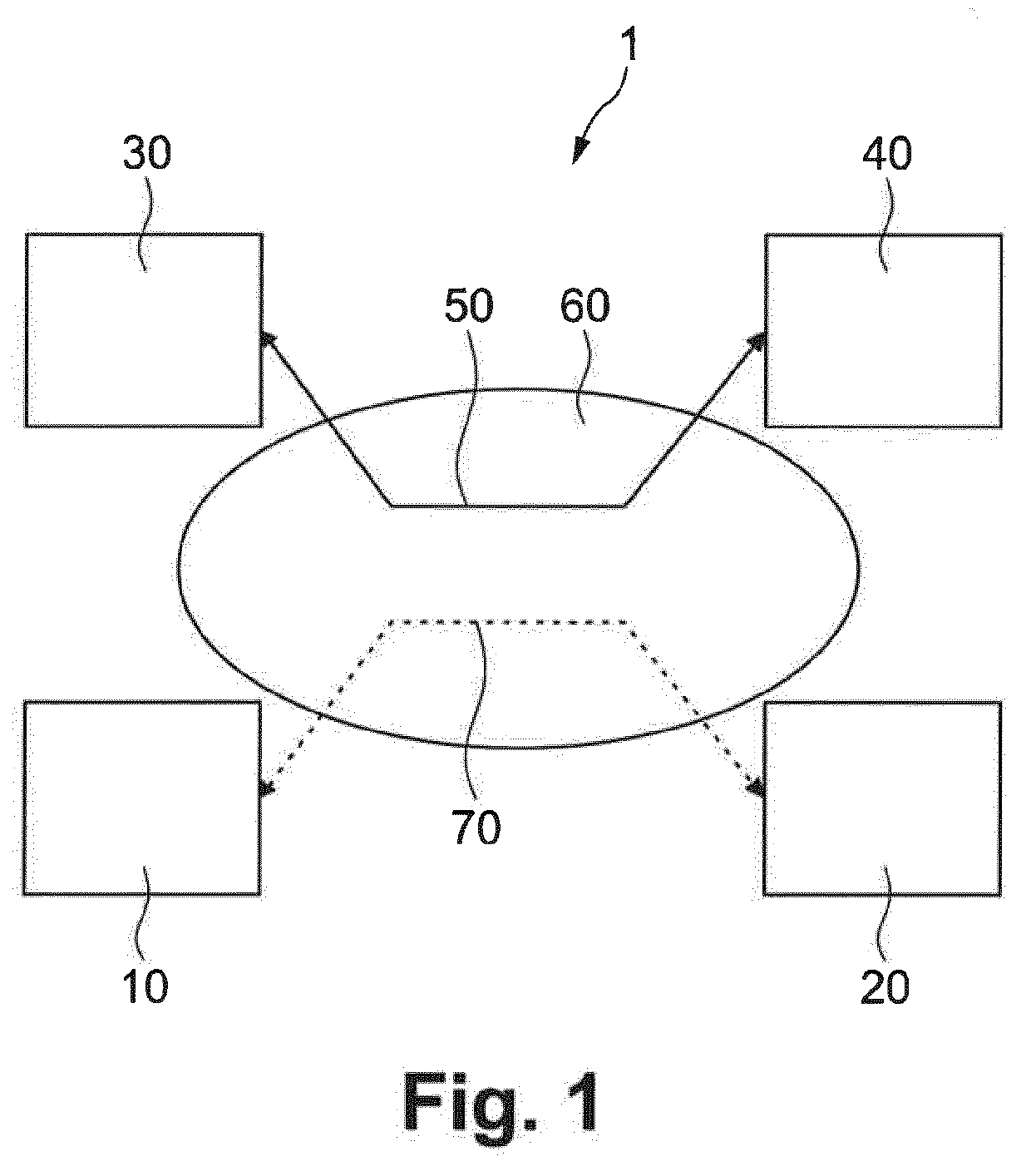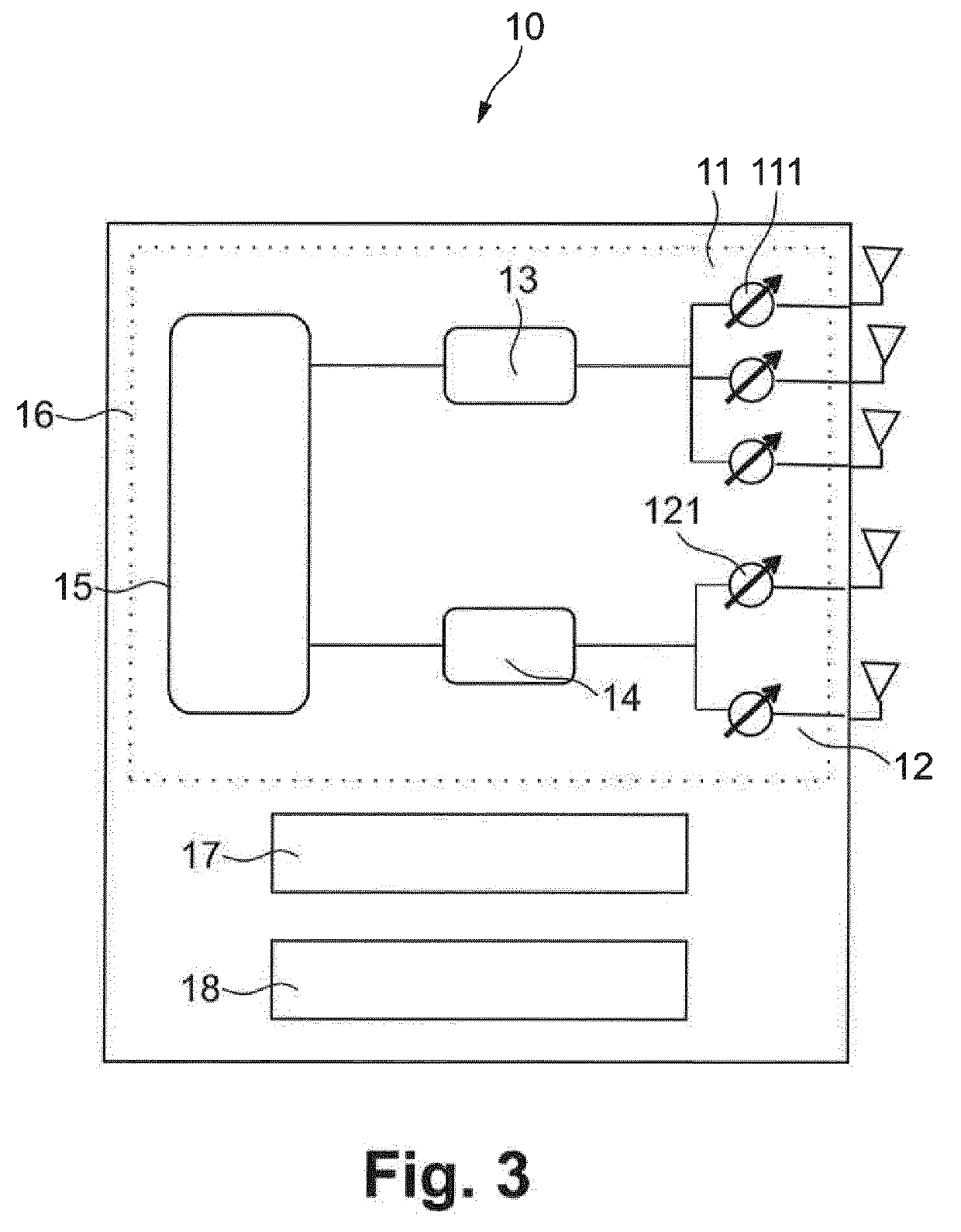Communication device and method
a communication device and communication method technology, applied in the field of communication devices and communication methods, can solve the problems of inability to directly apply mm-wave domain, inability to provide sr for state of the art robust beamforming techniques, and inability to coordinate ia on individual devices, etc., to avoid cumbersome estimation, realistic estimation, and realistic interference alignment
- Summary
- Abstract
- Description
- Claims
- Application Information
AI Technical Summary
Benefits of technology
Problems solved by technology
Method used
Image
Examples
first embodiment
[0038]The function of the interference alignment module 18 is described in detail with reference to FIG. 4. FIG. 4 shows a simplified flow chart of the communication method for interference alignment according to the present disclosure. In particular, FIG. 4 shows the steps required to perform interference alignment according to the present disclosure. It is understood that the communication method may include further steps or additional intermediate steps which are not depicted in this flow chart.
[0039]In FIG. 4, with reference numerals 301 and 302, a first and a second input to the interference alignment process are denoted. The first input 301 constitutes channel characteristics between the first communication device and one of the further communication devices. Preferably, the channel characteristics are an estimation of the channel between these two devices which is determined by the first communication device detecting flow control signals exchanged between the further communi...
embodiment 1
[0094]2. The first communication device , wherein the interference alignment module (18) is configured to obtain the channel characteristics and the non-reciprocity mismatch without requiring exact channel coefficients from each individual antenna element of the further communicating device.
[0095]3. The first communication device according to any one of embodiments 1 or 2, wherein the interference alignment module (18) is configured to determine the channel characteristics by detecting flow control signals that are exchanged over the link between the pair of further communication devices (30, 40).
[0096]4. The first communication device according to any one of embodiments 1 to 3, wherein the interference alignment module (18) is configured to apply one or more receive beamformers to determine the channel characteristics between a transmitting device of the pair of further communication devices (30, 40) and the first communication device (10).
[0097]5. The first communication device (1...
embodiment 7
[0100]8. The first communication device , wherein the mismatch information includes a level of non-reciprocity of the transmission and reception antenna patterns of the pair of further communication devices (30, 40).
[0101]9. The first communication device according to embodiment 7, wherein the mismatch information includes a value quantifying the mismatch between the transmission and reception antenna patterns of the at least one of the pair of further communication devices and information indicative of a distance measure based on which this value was calculated.
[0102]10. The first communication device according to any one of embodiments 7 to 9, wherein the mismatch information is included in flow control signals exchanged between the pair of further communication devices (30, 40).
PUM
 Login to View More
Login to View More Abstract
Description
Claims
Application Information
 Login to View More
Login to View More - R&D
- Intellectual Property
- Life Sciences
- Materials
- Tech Scout
- Unparalleled Data Quality
- Higher Quality Content
- 60% Fewer Hallucinations
Browse by: Latest US Patents, China's latest patents, Technical Efficacy Thesaurus, Application Domain, Technology Topic, Popular Technical Reports.
© 2025 PatSnap. All rights reserved.Legal|Privacy policy|Modern Slavery Act Transparency Statement|Sitemap|About US| Contact US: help@patsnap.com



